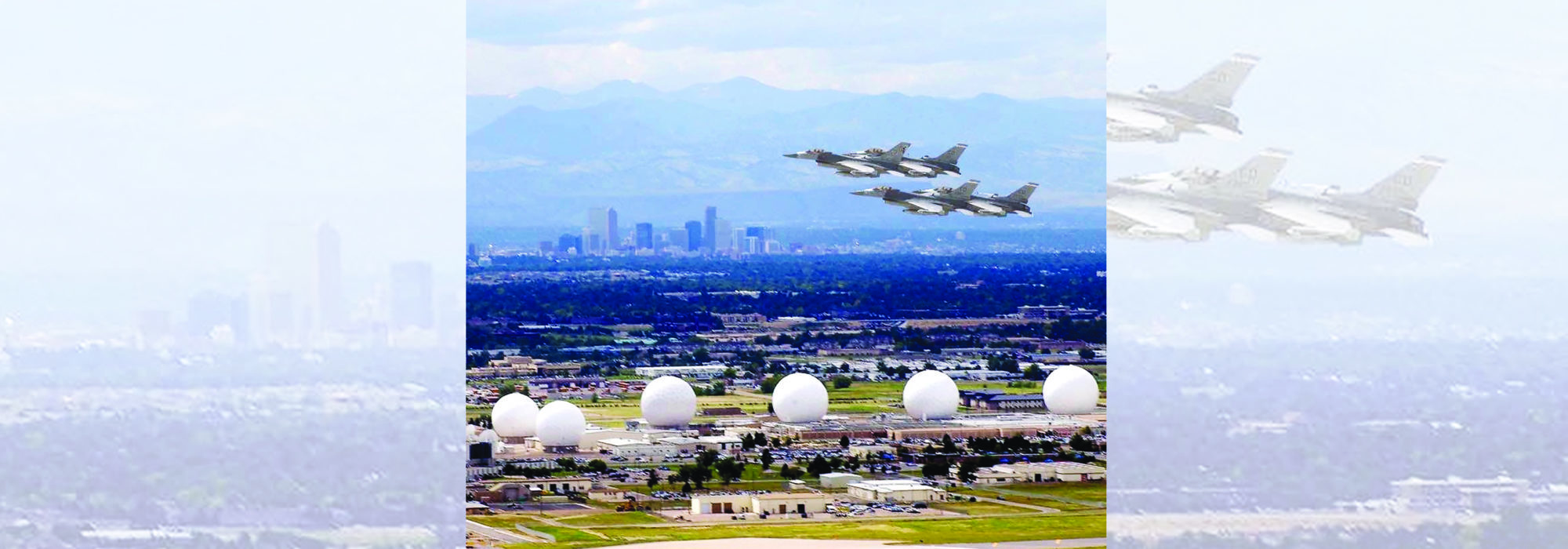Tragedy over France
The 1918 Meuse-Argonne offensive was the biggest U.S. armed campaign ever to that point. Among 26,277 American dead was 1st Lt. John Buckley of Longmont, Colo., who met a truly tragic end.
John Harold Buckley—today’s Buckley Space Force Base, Colo., honors his name—was born in 1895 into a family of achievers. The family trait rubbed off on “Buck,” as he was called. At Longmont High School he was an honor student and track star. At University of Colorado he continued to shine in academics and sports.
In 1914, however, the World War erupted. Buck joined the National Guard in March 1916. Within weeks, Washington mustered his unit to fight on the Mexican border, though it didn’t deploy.
Buck returned to college and stayed in the Guard. The U.S., when it went to war in April 1917, federalized his unit. Buck, a month from graduation, left school and transferred to Army aviation.
Buckley took officer training and was commissioned at Fort Riley, Kan., primary pilot training at Chanute Field, Ill., and advanced flight training at Gerstner Field, La. By late 1917, he was a pilot in the 28th Aero Squadron and on his way to France.
From the day Buckley arrived, he knew he would see major combat. The air was thick with rumors of a big U.S. offensive in the works. His squadron trained relentlessly at Issoudun, France.
Flying from Vaucouleurs Aerodrome, Buckley saw his first combat. He and his squadron mates joined the St. Mihiel Offensive, dropping “hand bombs” on German ground targets. This posed severe risk, because it required attacking at very low altitude.
On Sept. 20, the squadron moved to Lisle-en-Barrois Aerodrome, much closer to the front. For the next week, its pursuit aircraft flew reconnaissance missions.
Buckley saw action when the Meuse-Argonne Offensive began on Sept. 26. Earlier, he had said: “If I knew tomorrow would be my last flight, I would still go with the same thrill that I have today.” As it turned out, Sept. 27, 1918, was the last day of his life.
In heavy rain, Buckley and five other pilots took off in their Spad XIIIs and formed up—encased in thick clouds—at 10,000 feet. They flew left-hand-turn circles, waiting for two other pilots to join the formation.
Visibility was poor. Suddenly, Buckley’s Spad and another flown by 1st Lt. Kenneth Bell were seen to be a collision course. Both pilots dived and one turned away, but the left wing of one struck the left wing of the other, and both wings tore away.
The aircraft fell into a death spiral, crashed, and exploded, killing both Buckley and Bell. As in classic tragedy, neither protagonist could have avoided his fate.
Buckley Air Force Base was formally created in 2000, though antecedents reach back to 1938. It was renamed Buckley Space Force Base on June 4, 2021. It is home of Buckley Garrison, Space Delta 4, and other space-related organizations.
John Harold Buckley
- Born: July 8, 1895, Longmont, Colo.
- Died: Sept. 27, 1918, near Lisle, France
- College: University of Colorado
- Occupation: U.S. military officer
- Services: Colorado National Guard; U.S. Army—Signal Corps, Air Service
- Main Era: World War I
- Years Active: 1916-18
- Combat: Western Front (Meuse-Argonne Offensive)
- Final Grade: First Lieutenant
- Honors: World War I Victory Medal, Purple Heart (posthumously awarded)
- Resting Place: Meuse-Argonne American Cemetery, France
Buckley Space Force Base
- Service: United States Space Force
- State: Colorado
- Nearest City: Aurora
- Area: 6 sq mi / 3,840 acres
- Status: Open, operational
- Opened as Demolition/Bomb Range: January 1938
- Renamed Buckley Field: June 14, 1941
- Inactivated: Sept. 30, 1946
- Commissioned (Navy) as NAS Denver: Sept. 28, 1947
- Decommissioned (Navy): June 30, 1959
- Conveyed to USAF: July 1, 1959
- Renamed Buckley ANGB: April 18, 1960
- Converted to Buckley Air Force Base: Oct. 1, 2000
- Renamed Buckley Space Force Base: June 4, 2021
- Current owner: Space Operations Command (USSF)
- Former owners: Technical Training Command (AAF); U.S. Navy Reserve; Colorado Air National Guard; Air Force Space Command (USAF)
- Home of: Space Delta 4 (USSF)



